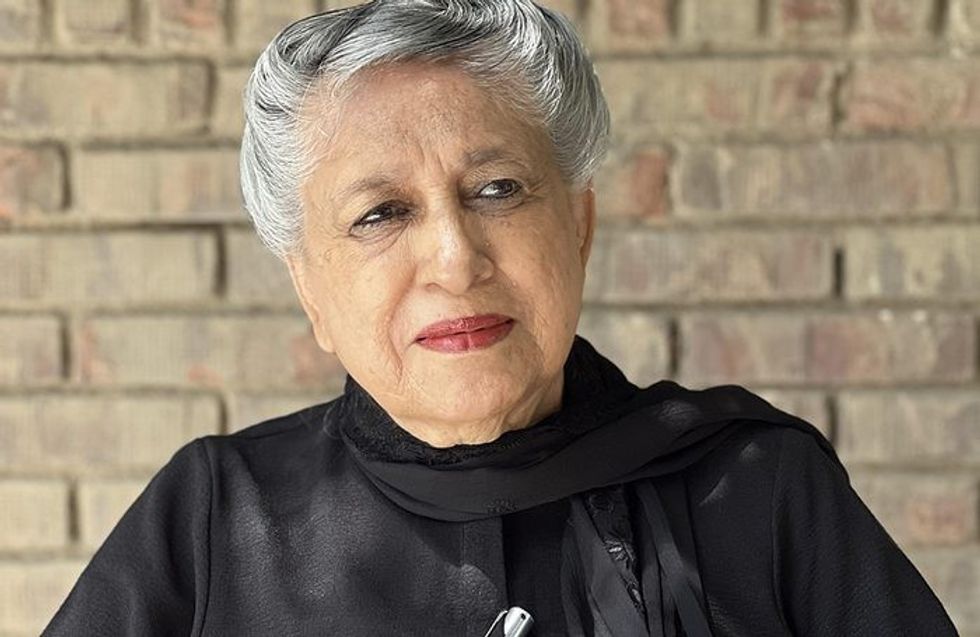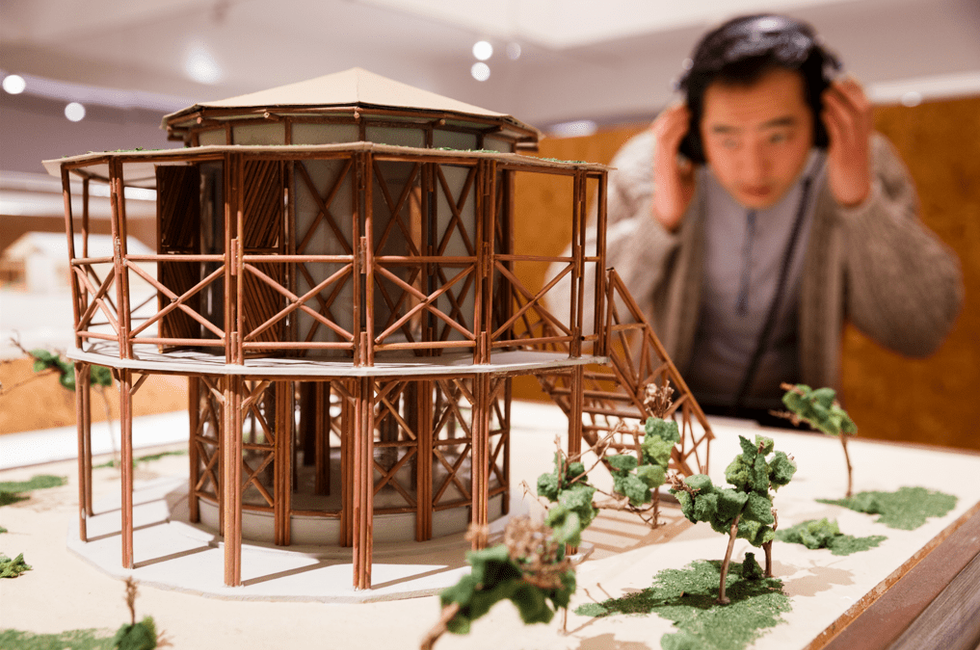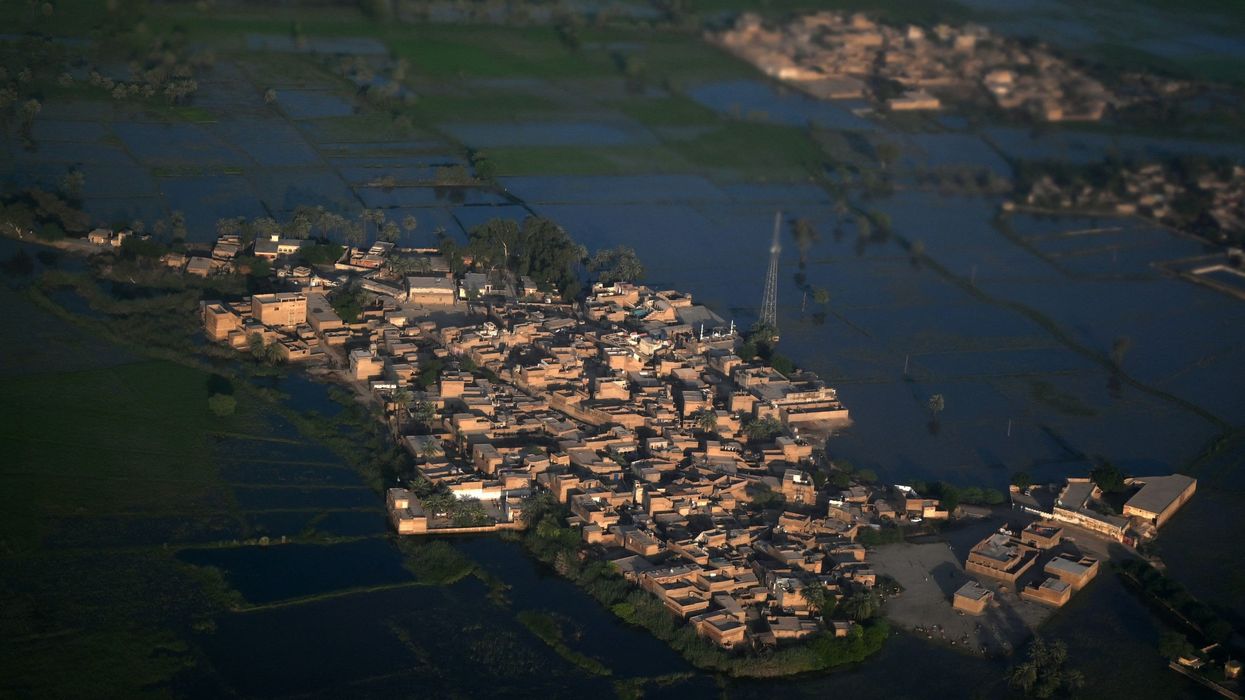In flood-hit southeastern Pakistan, villagers are trading tents and tarpaulins provided by aid agencies for local materials such as lime, mud and bamboo to build their own low-cost and water-resistant homes as part of a post-disaster recovery rethink.
They have been designed by Yasmeen Lari – Pakistan’s first certified female architect and who this month won the 2023 Royal Gold Medal from The Royal Institute of British Architects for her relief architecture. About 1,000 such houses have been built in Sindh province following unprecedented floods last year that submerged about a third of the country and killed at least 1,700 people.
While traditional mud huts are vulnerable to extreme weather and building concrete homes is expensive and high in carbon emissions, Lari’s houses were devised to be disaster-resilient, environmentally friendly, and quicker and easier to erect.
In Kewal Kohli, a village in Pakistan’s southern Sindh province, former schoolteacher Rano Kewal’s home was one of 1.4 million houses destroyed in the climate change-fuelled catastrophe last year, according to government data.
When his mud hut washed away, Kewal and 35 members of his family were forced
to live in tents for a month, until the Heritage Foundation of Pakistan – an NGO co-founded and headed by Lari – helped the 28-year-old build a new house.
“We will be able to survive the next floods,” said Kewal, who has since helped
to build 200 similar homes in four nearby villages, with materials and training provided by the NGO.

Lari used to design modern, glitzy buildings - from hotels and offices to government headquarters – made from concrete, glass and steel, but turned to sustainable relief architecture in 2005 after an earthquake devastated much of Kashmir.
She said her NGO has helped survivors of natural disasters in Pakistan to build about 55,000 homes, 4,500 of which have been erected since the floods that started last June. Her aim is to ultimately provide homes for at least 350,000 households.
The 82-year-old voiced her frustration with the United Nations’ humanitarian system and institutions like the World Bank for giving out cash, grants and relief “without building the capacity of the people” – and said international donors tended to erect concrete structures after disasters in Pakistan.
“These international colonial charity models are a complete failure as they treat the poor as victims, turning them into supplicants... (with) no attempt at nurturing or encouraging the hidden capabilities of the affected people,” Lari added.
Many NGOs and other local and international bodies involved in post-flood reconstruction still champion permanent brick and mortar houses as the most effective way of protecting the country’s poorest citizens from disasters.
A spokeswoman for the World Bank in Pakistan, Mariam Altaf, said the institution was aware of the need for more sustainable and affordable housing options, especially those that can create local employment opportunities and support local economies. However, Altaf said permanent brick and mortar houses “are more resilient housing options than mud-based ones as they will be better able to withstand natural disasters”.
This was echoed by Najaf Khan Malik, chief operation officer of the Sindh People’s Housing Foundation (SPHF) - which was established by the Sindh government to build new homes in flood-hit areas.
Malik said the SPHF wanted to use “flood resilient sustainable construction material” like burnt bricks and cement, but avoid using mud – citing its own study which found that 75 per cent of the two million homes washed away in Sindh were made of mud.
The organisation was aware of Lari’s work and was looking into incorporating innovative and sustainable methods that are “easily adoptable by the affected communities”, he added.
At first glance, the homes designed by Lari resemble traditional village architecture known in Pakistan as chauhras. Their seemingly simple exteriors mask innovative designs and are inspired by indigenous building techniques from rural Pakistan, but re-engineered to not only stop the houses from being flooded, but also make them more sustainable and green. The prefabricated bamboo structures - which sit on raised platforms - have limehardened mud walls that keep out water, while the roofs consist of bamboo covered with straw matting, a layer of tarpaulin, and pozzolana, a waterproofing material.
“Except for bamboo, which needs to be bought from the nearest town or city, the straw, earth and grass for matting are procured from around villages and freely available,” Lari said.
Lime absorbs carbon dioxide from air and bamboo sequesters carbon as it grows, making the homes good for the environment, she said. The houses take a week to build, compared to about three weeks for mud huts and up to two months for permanent cement homes. They can be built for under $87, which is fewer than a tenth of the cost of cement structures, according to Lari’s NGO.
It is teaching villagers to build their own homes through workshops and has released a series of tutorials on YouTube.
“Every one of the vulnerable should learn to build safe structures so that they are not displaced and they are able to fend for themselves (when a disaster strikes),” said Lari.

Hira Zuberi, a Karachi-based independent architect, said she had studied Lari’s designs and highlighted the homes were easy to repair and replace, and that the materials could be transported and reused easily if a household decides to move. “Most important, she is involving the rural communities in the process so there is a sense of ownership,” she said.
While Lari said she had discussions with organisations such as Islamic Relief and Unicef, many NGOs in Pakistan still prefer cement homes when it comes to post-disaster housing.
For example, Ashfaque Soomro, the executive director of the Research and Development Foundation – which is building shelters in Sindh – said such homes had the best chance of withstanding floods, based on the NGO’s experience of previous disasters.
The foundation’s cement houses cost between $872 (£700) and $1,245 (£999), and sometimes reuse debris to be less carbon-intensive, he added.
Noman Ahmed, head of the architecture department at the NED University of Engineering and Technology, said he believed house reconstruction could be done with a combination of earth, bamboo, cement and concrete - and stressed
the importance of mapping flooding patterns to avoid rebuilding in risky areas.
“It will help us identify ‘no construction zones’ where construction should be prohibited,” he said in an interview.
As architects, analysts and NGOs consider the future of building back better after disasters, residents in Sindh province’s Pono village – where Lari-designed homes were constructed before the 2022 floods – say the houses have proved their resilience. “We remained dry, as did our belongings, despite the unforgiving rain,” said Dhani Khumo, one of the residents.
(Thomson Reuters Foundation)












